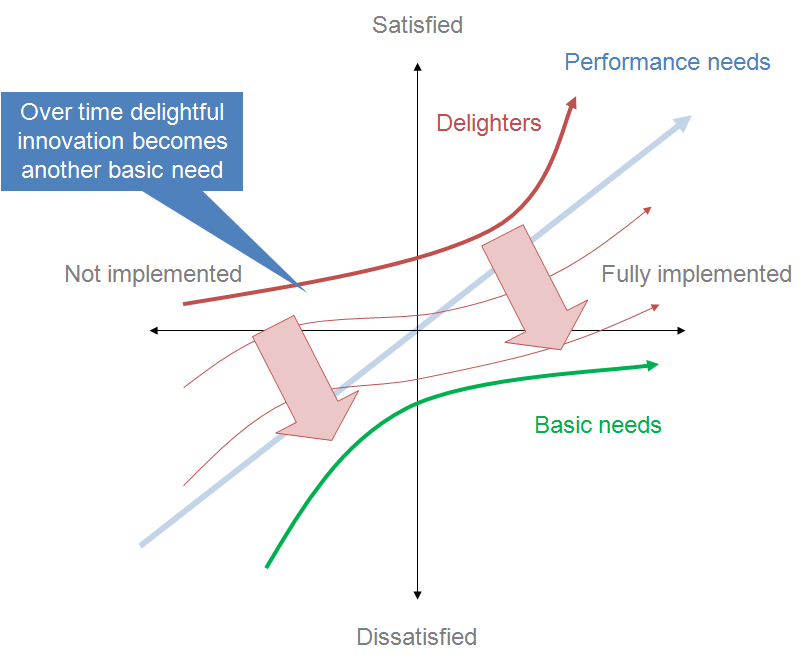
· Delight Features: Features that are not expected and that when successfully delivered can exponentially increase the customer’s perception of the brand, product, or service.
· Performance Features: The features that are expected to perform in a way that provides a competitive advantage, or why the customer selected the product over a competitive product.
· Minimum Features: These are minimum expected features, the lack of which can exponentially decrease the perceived value of the brand, product, or service.
· Undesired Features: While not common, these are features whereby their existence would lead to negative perception — that is the customer does not want these features to be present.
“There is a scientific and mathematical approach to engaging with customers to understand subjective desires and shape overall product and service direction.”

The Kano Model contains factors that not only encompass the product and service features — but *how* successfully those products and services are delivered. The same factors of delight, performance, minimum, and undesired can be mapped to the physical interaction with our brand in the delivery of the products or services.
“Given the importance of customer service and customer engagement, as leaders we should also work to define those brand and team member attributes which contribute to success.”
Other aspects of the Kano Model is that it can be used to help define and prioritize new products and services that should be offered by the brand. There is a scientific and mathematical approach to engaging with customers to understand desires and shape product and service direction. Given the importance of customer service and engagement, as leaders we should also work to define those brand and team member attributes which contribute to success.
What are the minimum expectations of the brand and team as it relates to the customer experience? What can be done to provide a competitive advantage? And what would our engagement look like if we really wanted to generate delight? And what should we *not* be doing? These subjective qualities can also be mapped to customer satisfaction surveys. We also develop and use associated metrics to reward employees and team members for performance that delights our customers.